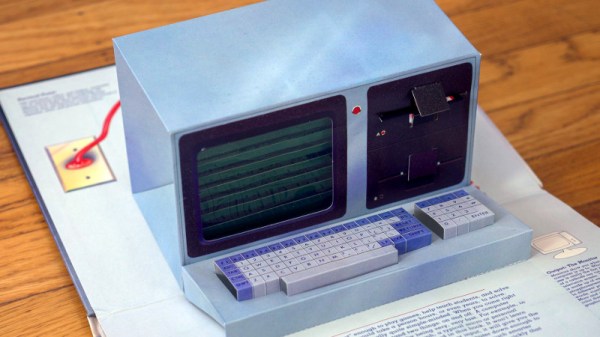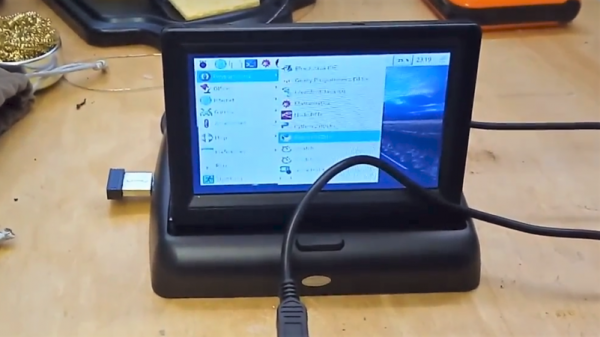It’s an oft-derided sentiment from a Certain Type of Older Person, that the Youth of Today don’t know how lucky they are with their technology. Back when they were young they were happy with paper and string! Part of the hilarity comes from their often getting the technology itself wrong, for example chastising the youngsters for their iPods and Game Boys when in reality those long-ago-retired devices are edging into the realm of retrotechnology.
But maybe they have a point after all, because paper and string could be pretty good fun to play with. Take the example presented in a Twitter thread by [Marcin Wichary]. A pop-up book from 1984 that presents the inner workings of a computer in an astounding level of detail, perhaps it stretches the pop-up card designer’s art to the limit, but along the way it makes a fascinating read for any retrocomputing enthusiast. Aside from the pop-up model of the computer with an insertable floppy disk that brings text onto the screen we see at first, there is a pop-up keyboard with a working key, a peer inside the workings of a floppy disc, a circuit board complete with a paper chip that the reader can insert into a socket, and a simulation of a CRT electron bean using a piece of string. A Twitter thread on a book is not our normal fare, but this one is something special!
Did any of you have this book when you were younger? Perhaps you still have it? We’d love to hear from you in the comments. It’s probably not the type of book we normally review, but we’ve been known to venture slightly outside tech on that front.














